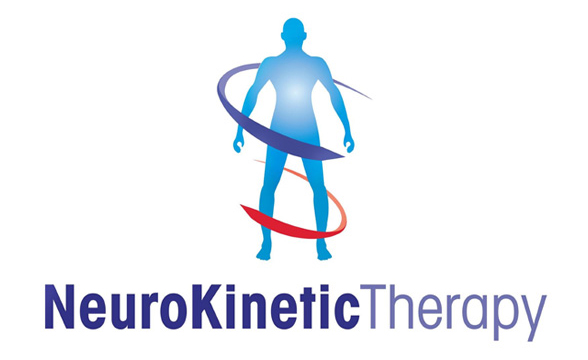“Movement is a medicine for creating change in a person’s physical, emotional, and mental states.” – Carol Welch
At Pain and Performance Solutions effectively uses a wide range of boy work systems and therapies to achieve muscle recovery and correct muscular dysfunction. And one of the fundamental truths we have learned is that the human brain is the major key to healthy movement – and recovery.
Eliminating compensation dysfunction and restoring proper function of the muscles is the primary purpose of a technique we use known as NeuroKinetic Therapy®. Through specific muscular challenges, the primary source of dysfunctions can be identified and eliminated.

Understanding NeuroKinetic Therapy®
Essentially, NeuroKinetic Therapy® is a corrective movement system and a complex bodywork modality. It is used for an assessment system and a rehabilitative technique to treat neck pain, low back pain, carpal tunnel syndrome, and other issues.
It is based on the premise that, when an injury has occurred, nearby muscles shut down or become inhibited, forcing other muscles to compensate for the loss and become overworked. As a result, the compensation pattern can create pain or tightness. NeuroKinetic Therapy® is performed by applying light pressure that is resisted by the client. The strength or weakness of each muscle and then be assessed to reveal the sources of injury and retraining the client’s body in then undertaken to remove the compensation patterns. This results in programming the body at the neural level.
David Weinstock co-developed this technique in the mid-1980s. He is also the author of Neurokinetic Therapy®, an Innovative Approach to Manual Muscle Testing. NeuroKinetic Therapy® and has used to treat a variety of disorders. Weinstock describes NeuroKinetic Therapy® as,
“(a) corrective movement system protocol employing a system of precise muscle tests has the ability to change the programming of the Motor Control Center (MCC) in the cerebellum. The MCC coordinates all movement patterns in the body. It learns through failure.”
Neurokinetic Therapy® (also known as NKT®), is a form of natural therapy also used to correct learned movements and muscle functions within the body that cause joint tenderness, muscular pain and even contributes to poor posture.
Because it is also used as a healing “bodywork modality,” similar to massage therapy, NKT® is often employed as a rehabilitative approach for treating injuries and chronic pain.
What is NeuroKinetic Therapy®?
Many injuries, especially sports-related injuries, often don’t become apparent until more damage can occur. The tendency among athletes is often too “push through” the pain. By doing so, however, they can unwittingly neglect these injuries. And, as a result, they can become worse over time.
The human brain and body adapt to the results of injuries. While our bodies do usually heal over time, left untreated they can cause more harm. When an injury isn’t completely healed, or has deteriorated over time, we can experience pain in other areas. And this is often the result of muscle compensation.
NeuroKinetic Therapy® assesses “coordination system dysfunctions” that can result from several causes. These include muscle overuse, repetitive stress and positioning, intense training, postural misalignment, surgery, and traumatic injury. It works by communicating with what is known as the brain’s Motor Control Center (MCC) in the cerebellum. The function of the MCC is to coordinate and regulate muscular activity for proper body movement.
The MCC stores movement as a pattern, not as specific muscle functions. This means that when a muscle is inhibited for a length of time, the MCC finds a substitute muscle to perform the disabled function. Over time movement dysfunction and pain will occur If this pattern remains in the motor control center.
After an injury, the MCC shifts to a muscle compensation pattern, which will continue unless it is restored by retraining. In a whiplash accident, for example, the posterior neck muscles brace for the injured anterior neck muscles. This pattern can endure forever unless there is some intervention.
And that means the muscles that are supposed to perform a normal movement are inhibited because of compensations, or coordination system dysfunctions. Instead, other muscles known as compensators are now used to perform the task. Unfortunately, left untreated, this can lead to muscle tightness, stiffness, pain, and even more dysfunction.
We use NeuroKinetic Therapy™ to find and eliminate dysfunctional movement patterns and restore functional movement. We do this by testing muscles to identify which ones are compensating for other muscles. Once the compensation pattern is defined, then the “compensator” muscle is released, and the inhibited muscle is then neurologically retrained. The goal is to achieve proper movement throughout the optimal range of motion repeatedly.
We use NeuroKinetic Therapy® as an effective modality for reha bilitation and manual therapy as it not only identifies the cause of pain and dysfunction but can correct it quickly and quite painlessly.
A Full Spectrum of Therapy Options Available to Help You
We will conduct a full examination to help us determine which form of treatment is best suited to put you on your road to recovery. Because our bodies will compensate for pain to allow us to function during our day, the pain can shift around and lead to other forms of pain.
Our goal is to work through the sequence of pain and dysfunction in order to get your body healthy and working properly, and to achieve total recovery. Don’t hesitate to reach out. We are here to help and will answer any questions that you may have.
You can reach us at (707) 636-4404 or by filling out our online contact form.
Frequently Asked Questions
1. What is NeuroKinetic Therapy® (NKT)?
NeuroKinetic Therapy® (NKT) is a corrective movement therapy that addresses dysfunctional movement patterns caused by injury.
2. How does NKT work?
NKT uses muscle testing to identify which muscles are compensating for injured ones. It retrains the brain’s Motor Control Center (MCC) to restore proper muscle function.
3. What conditions can NKT treat?
NKT treats issues like neck pain, back pain, carpal tunnel syndrome, and other muscle-related conditions.
4. What causes muscle dysfunction?
When a muscle is injured, nearby muscles compensate. Over time, this leads to pain and movement issues.
5. How does NKT resolve dysfunction?
By testing and retraining muscles, NKT corrects compensation patterns, restoring proper movement and reducing pain.
6. Is NKT painful?
No, NKT is a non-invasive and generally painless therapy that works by retraining inhibited muscles.
7. Who developed NeuroKinetic Therapy®?
David Weinstock co-developed NKT in the 1980s and authored a book on the approach.
8. How does NKT benefit athletes?
NKT helps athletes recover from injuries by correcting movement dysfunctions before they worsen.
9. What happens during an NKT session?
The therapist applies light pressure to assess muscle strength, then retrains weak muscles to restore function.
10. How can I schedule an NKT session?
Contact Pain and Performance Solutions at (707) 636-4404 or fill out the online contact form for more details.


